Who's That Mathematician? Paul R. Halmos Collection - Page 44
For more information about Paul R. Halmos (1916-2006) and about the Paul R. Halmos Photograph Collection, please see the introduction to this article on page 1. A new page featuring six photographs will be posted at the start of each week during 2012.
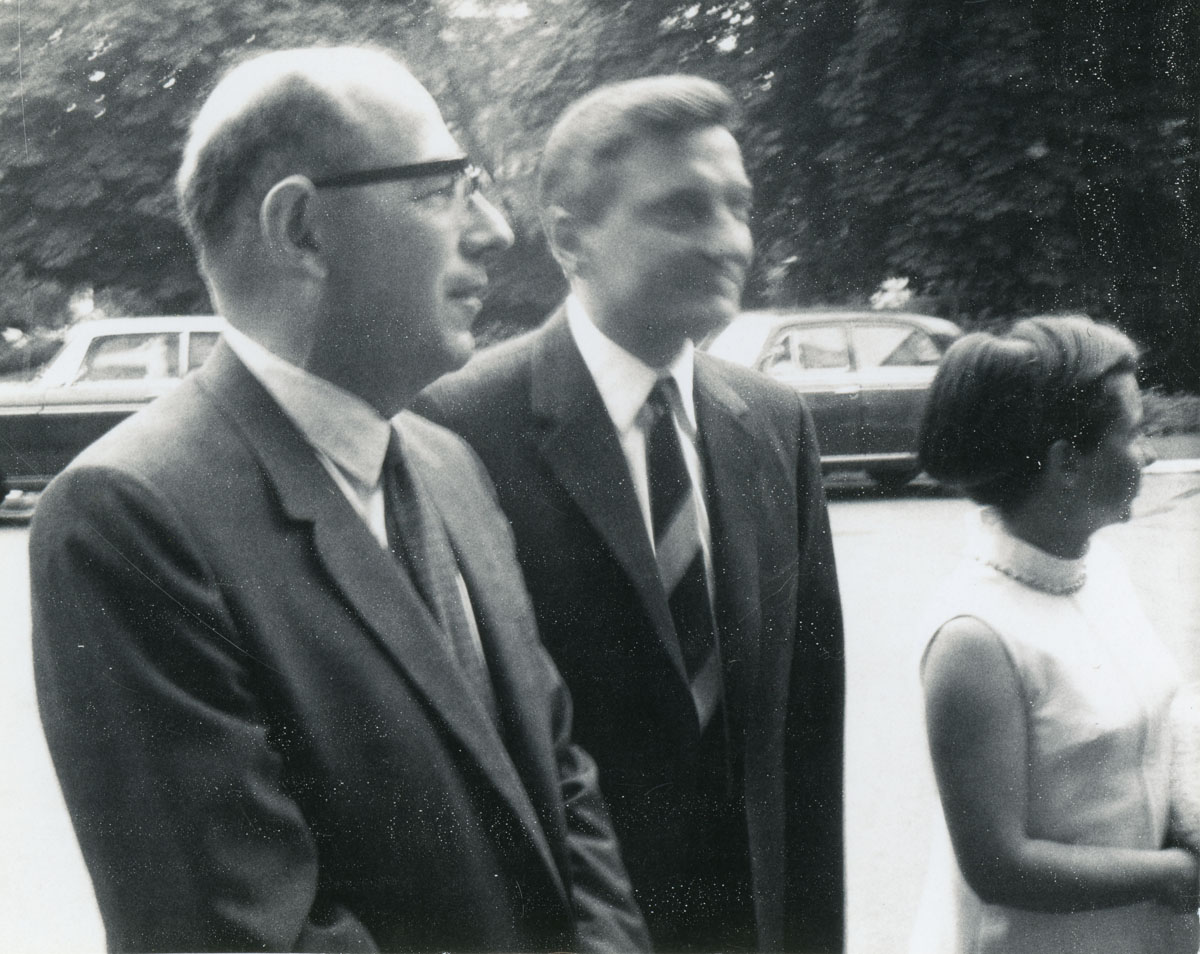
Halmos photographed, left to right, Abraham Robinson (1918-1974), Dieter Puppe (1930-2005), and a woman identified only as Puppe’s wife on July 18, 1968, in Heidelberg, Germany.
Born in Germany, “Abby” Robinson moved with his family to Palestine in 1933, just after Hitler came to power. After earning his bachelors degree in mathematics from Hebrew University of Jerusalem in 1939, he studied for just a few months at the Sorbonne in Paris before fleeing Hitler again, this time to England. Although his war service with the Free French Air Force made him an expert in aerodynamics, when he finally returned to graduate school, Robinson also returned to his earlier interest in mathematical logic. He earned his Ph.D. in 1949 from the University of London with the dissertation “The Metamathematics of Algebraic Systems,” written under advisor Paul Dienes. He was on the faculties of the University of Toronto (1951-57), Hebrew University of Jerusalem (1957-62), the University of California at Los Angeles (1962-67), and, finally, Yale University (1967-74). His most famous invention was non-standard analysis (beginning in 1961) and his most famous book Non-standard analysis (1966). (Sources: MacTutor Archive, Mathematics Genealogy Project)
Dieter Puppe earned his Ph.D. in algebraic topology in 1954 from Heidelberg University under advisor Herbert Seifert. He was on the mathematics faculty at the University of Heidelberg until 1960, and then at the University of Saarland, Germany, from 1960 to 1968. In 1968, the year this photo was taken, Puppe returned to the University of Heidelberg and spent the rest of his career there, becoming emeritus in 1996. He and Halmos may have first met during the academic year 1957-58, which both spent at the Institute for Advanced Study in Princeton, New Jersey. (Sources: Mathematics Genealogy Project, Wikipedia)
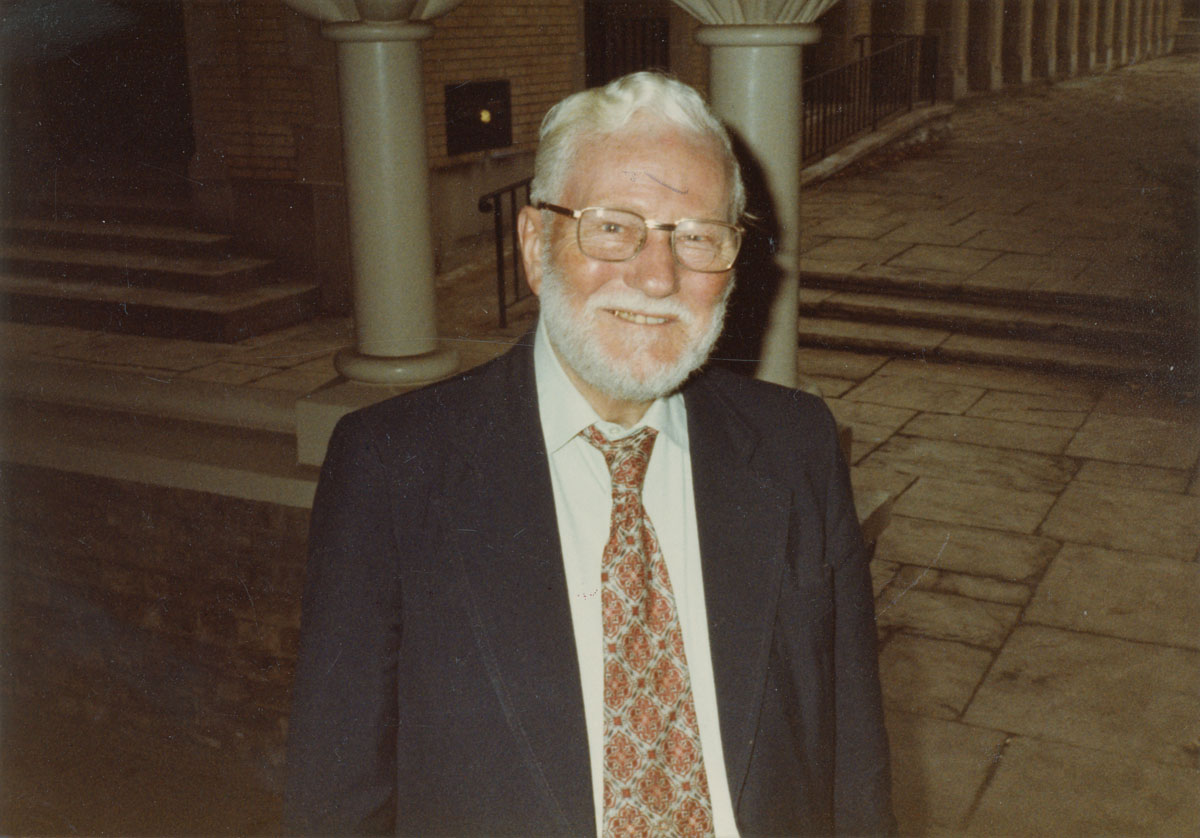
Gilbert de Beauregard Robinson (1906-1992) was photographed by Halmos in November of 1983 at the Ontario Mathematics Meeting in Toronto, Ontario, Canada. Another photograph of G. de B. Robinson, who spent his career at the University of Toronto, appears on page 10 of this collection, where you can read more about him. Paul Butzer (see page 9 of this collection), who was a Ph.D. student at the University of Toronto from 1948 to 1951, recalled Robinson as a “very helpful and influential person,” who dispensed useful and motivational advice such as, “If you do not publish in the first year after the doctorate, you will not make it as a real mathematician.” (Sources: Canadian Mathematical Society, MacTutor Archive, Paul Butzer (March 2012))
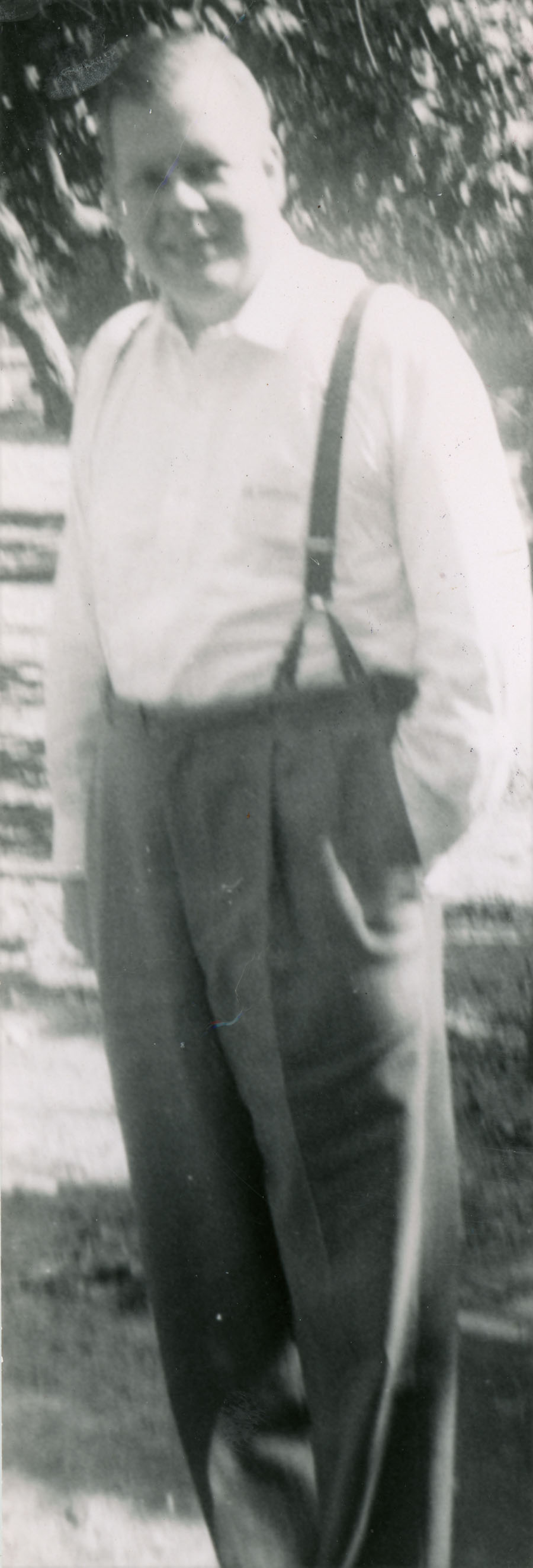
Halmos photographed Raphael Robinson (1911-1995) in about 1955. Robinson earned his Ph.D. in complex analysis from the University of California, Berkeley, in 1935 with the dissertation “Some results in the theory of Schlicht functions,” written under advisor John McDonald. After two years at Brown University in Providence, Rhode Island, Robinson returned to UC Berkeley, where he spent the rest of his career and life. He continued to work in analysis but also in logic, set theory, geometry, tilings of the plane, number theory, and combinatorics, and it may be his work in logic, some of it with Alfred Tarski, his colleague at Berkeley from 1942 onward, that is best-known today. (Sources: MacTutor Archive, Mathematics Genealogy Project)
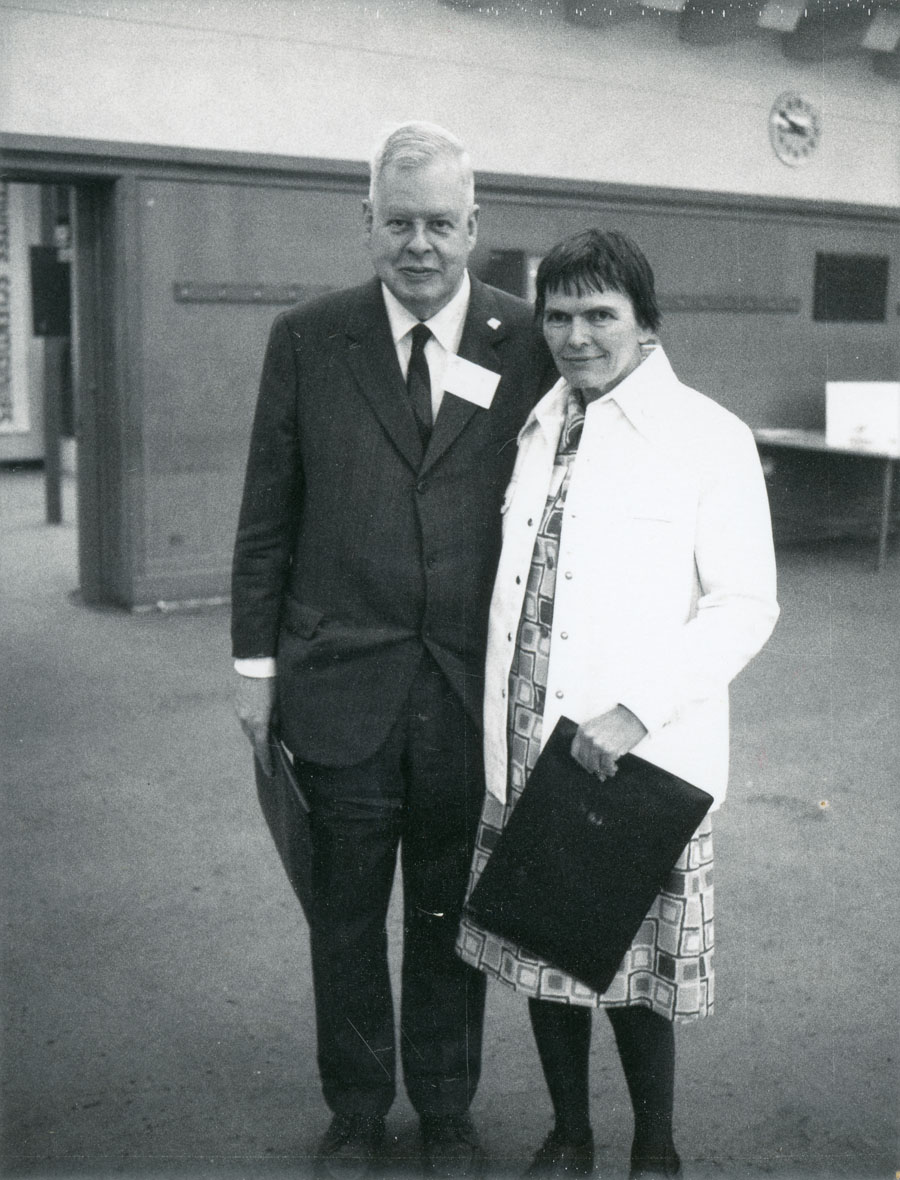
Raphael Robinson (1911-1995) and Julia Robinson (1919-1985) were photographed by Halmos on August 20, 1974, at the International Congress of Mathematicians held in Vancouver, British Columbia, Canada. The two mathematicians married in December of 1941. Another photograph of Raphael Robinson appears above. Additional photos of Julia Robinson appear on page 30 of this collection, where you can read more about her, and on page 42 of this collection.
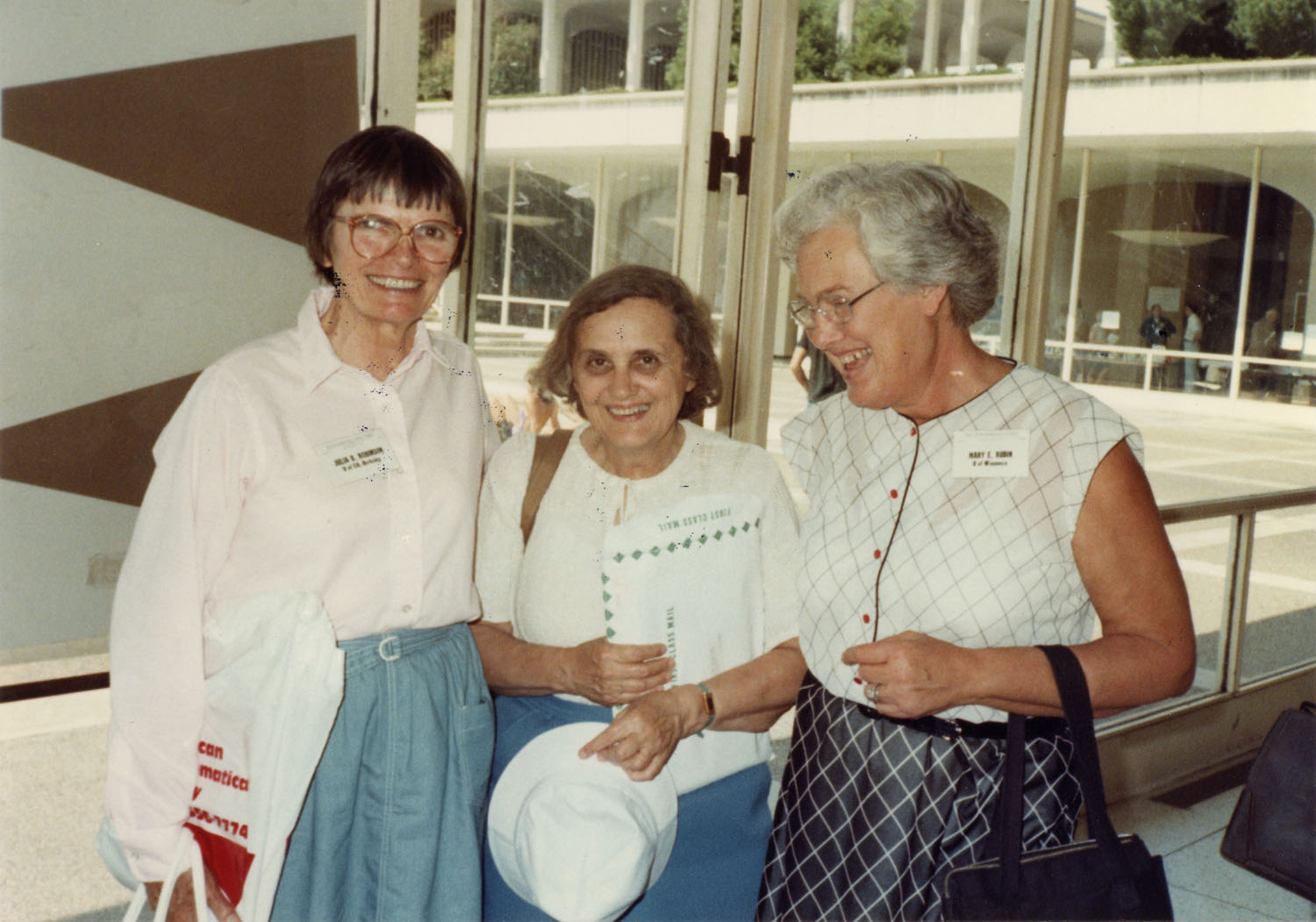
Halmos photographed, left to right, Julia Robinson (1919-1985), Lisl Gaal, and Mary Ellen Rudin (1924-2013) in August of 1983 in Albany, New York. Additional photographs of Julia Robinson appear above; on page 30 of this collection, where you can read more about her; and on page 42 of this collection. Another photograph of Lisl Gaal appears on page 15 of this collection, where you can read more about her. For another photo of Mary Ellen Rudin and to read more about her, see page 25 of this collection.
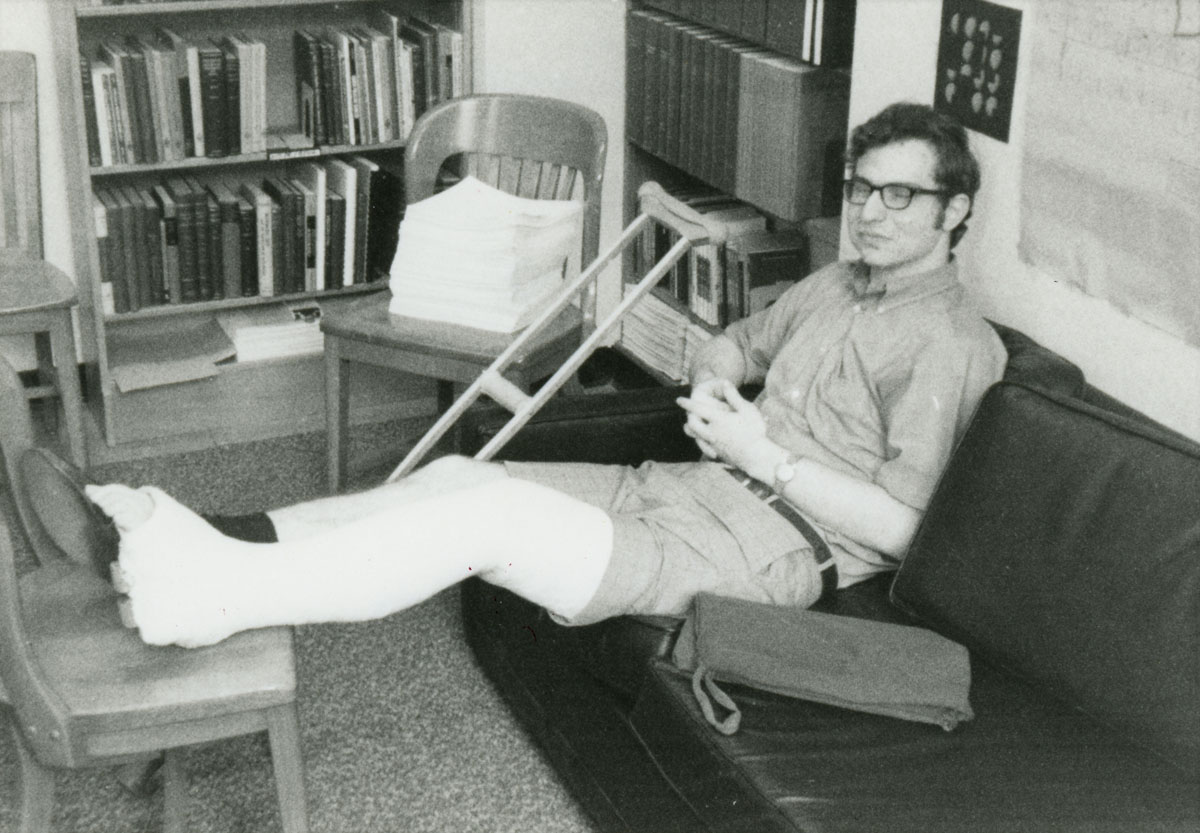
Halmos photographed his Ph.D. student Donald Rogers in October of 1970 in Bloomington, Indiana. Rogers earned his Ph.D. in 1975 from Indiana University with the dissertation “Normal Spectral Approximation.” In his I Want to Be a Mathematician, Halmos described Rogers as a member of his “gang of five” Ph.D. students at Indiana who took his real variable and/or functional analysis courses during 1969-1971 (Halmos’ first two years at Indiana), worked in operator theory, participated in a “private seminar (which met sometimes in my living room with beer and pretzels),” spent a semester at the University of Edinburgh with Halmos, and were awarded their Ph.D.s from 1973 to 1975. Halmos reported in 1985 that Rogers was pursuing a mathematical career outside of academia. (Sources: Mathematics Genealogy Project; Paul R. Halmos, I Want to Be a Mathematician: An Automathography, Springer, 1985, pp. 366-367)
For an introduction to this article and to the Paul R. Halmos Photograph Collection, please see page 1. Watch for a new page featuring six new photographs each week during 2012.
Regarding sources for this page: Information for which a source is not given either appeared on the reverse side of the photograph or was obtained from various sources during 2011-12 by archivist Carol Mead of the Archives of American Mathematics, Dolph Briscoe Center for American History, University of Texas, Austin.